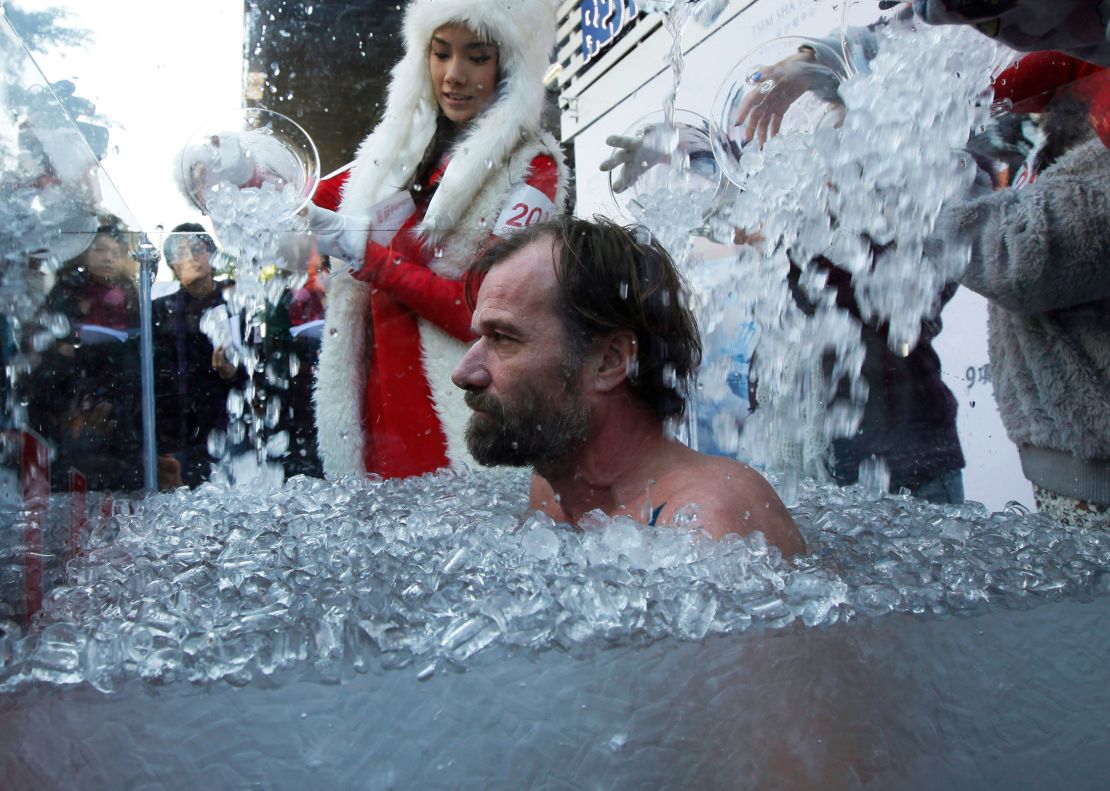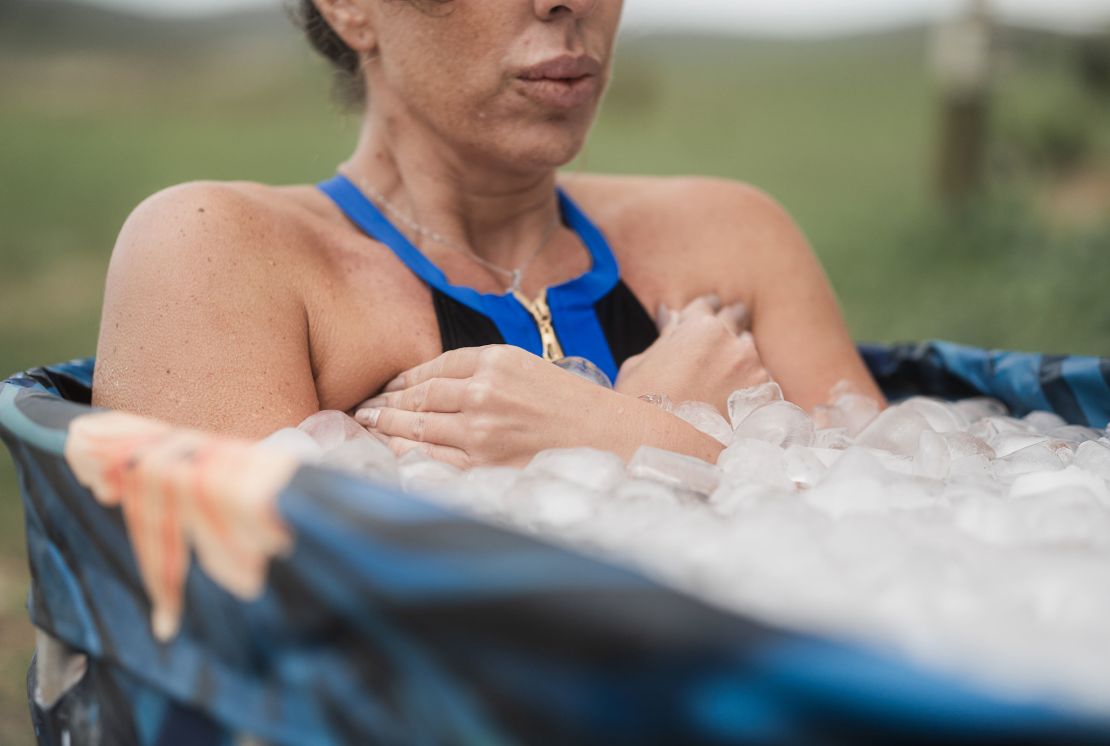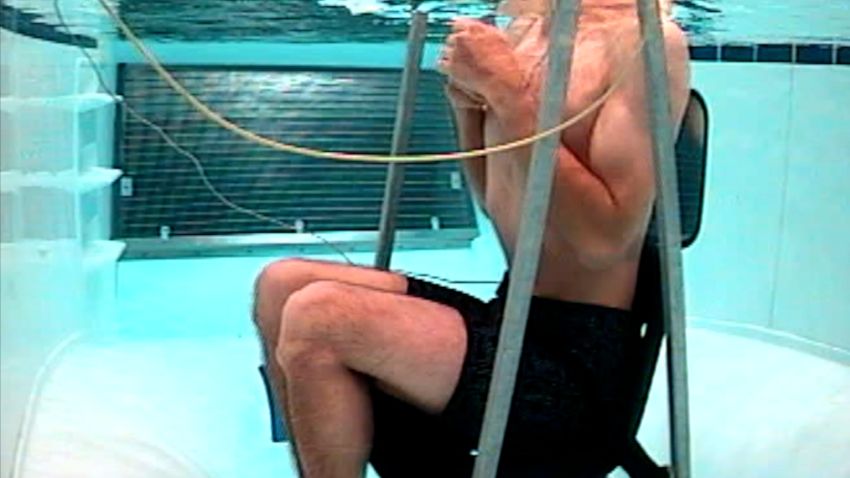Sign up for CNN’s Fitness, But Better newsletter series. Our seven-part guide will help you ease into a healthy routine, backed by experts.
A systematic review of scientific studies on the Wim Hof method of cold water therapy found the quality of the research inadequate to support most claims of effectiveness without addition investigation.
Wim Hof, a Dutch extreme athlete and motivational speaker, is well-known for his ability to withstand the cold.
“It must be noted that the quality of the studies is very low, meaning that all the results must be interpreted with caution,” according to the analysis published Wednesday in the journal PLOS One.
Hof attributes his success to his training method, which focuses on a commitment to practicing cold water therapy with a specific form of breathing. The training reduces stress, improves sleep, bolsters the immune system, and increases energy, focus and willpower, according to Hof.
While some research did hint at “promising” anti-inflammatory effects from a combination of cold water immersion and the Wim Hof method of breathing, “more research of higher quality” would be needed to verify that finding, the researchers noted.
“As revealed by the review, the science is too weak/biased to conclude what the Wim Hof method achieves,” said cold water survival expert Mike Tipton, professor of human and applied physiology at the University of Portsmouth in the United Kingdom, in an email. He was not involved in the study.

Known as “The Iceman,” Hof has swum under ice for 66 meters (72 yards), run a half-marathon barefoot in the snow and climbed Mount Everest without a shirt on. According to the Guinness World Records Hall of Fame, Hof has earned 18 Guinness World Records titles, often beating his own records to do so.
Other health benefits listed on Hof’s website, which have not undergone scientific validation in large, clinical trials, include increasing sports performance, reducing recovery time after workouts, improving blood pressure, providing pain relief, boosting the body’s metabolism, overcoming multiple sclerosis, and providing relief from arthritis, asthma, autoimmune disease, fibromyalgia and post-treatment Lyme disease syndrome.
Science on Wim Hof method
The review examined eight randomized clinical trials — considered the gold standard of research — but found the small sample size ranging from 13 to 40 mostly male participants in each study hindered the ability to generalize the results to other populations.
In addition, Tipton said, studies in the review did not compare the impact of ice water with any other physical activity such as indoor swimming, yoga or walking.
“We have no idea what, if any, ‘active ingredient’ is in the Wim Hof method. We have no idea if any benefits arising from the Wim Hof method could not be obtained more safely by other means,” Tifton said. “I do not agree that anyone can do things like cold water immersion.”
Submerging the body in cold water is not advised for a range of medical conditions, Tipton said. Those include asthma, high blood pressure, cardiac rhythm disturbances or any heart disease, unstable diabetes, seizure disorders such as epilepsy, and a family history of sudden or unexplained cardiac death.
“We acknowledge the need for more high-quality research to substantiate the Wim Hof Method’s promising effects,” a spokesperson for Hof told CNN via email. “It’s our ongoing commitment to collaborate with the scientific community to conduct larger, more inclusive studies that address these concerns.”
Cold water safety measures
Cold water drains heat from the body up to four times faster than cold air, according to the National Weather Service. “When your body hits cold water, ‘cold shock’ can cause dramatic changes in breathing, heart rate and blood pressure,” the service’s website says. “The sudden gasp and rapid breathing alone (create) a greater risk of drowning even for confident swimmers in calm waters.”
Yet the popularity of cold water therapy has exploded, with many people immersing themselves in home-based ice baths and cold showers as well as open water swims and dips, Tipton said.
“Wim Hof is encouraging people to get more physical which, at a time of increasing illness associated with a sedentary lifestyle, is a good thing, provided it is done safely,” Tipton said.

For anyone wanting to give the method a try, Tipton published a list of tips in September 2022 on how to do so safely.
First, get a thorough medical checkup.
“A recent study suggests that up to 43% of drownings are associated with pre-existing medical conditions,” Tipton said. “Pharmaceutical therapies, both acute and chronic, can alter an individual’s response to CWI (cold water immersion) and their perception of cold.”
Only swim on a beach with lifeguards and others, he noted, and be sure to check the forecast to avoid dangers such as rip currents. Wear a visible hat, take a tow float and consider a thermal wet suit for buoyancy.
Acclimate to the water by starting the process in warmer weather. As the water becomes colder, enter slowly, allowing the shock to dissipate before submerging your body. Avoid holding your breath; don’t stay in colder water longer than 10 minutes; and don’t rely on how you feel, as that can be “dangerously unreliable,” Tipton said. If you get into trouble, float on your back.
Once you exit the water, dry and dress quickly in warm clothing with a windproof outer layer and avoid driving a car for at least 30 minutes after the swim.






